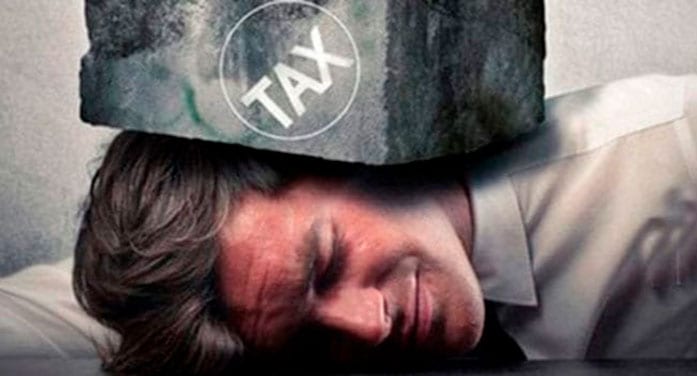 It’s been three years since the Alberta government implemented a “temporary” pause to the indexation of non-refundable income tax credits and tax bracket thresholds – a policy that has resulted in nearly $647 million in additional taxes being paid by Albertans between 2020 and 2022, according to a recent report by the University of Calgary’s School of Public Policy.
It’s been three years since the Alberta government implemented a “temporary” pause to the indexation of non-refundable income tax credits and tax bracket thresholds – a policy that has resulted in nearly $647 million in additional taxes being paid by Albertans between 2020 and 2022, according to a recent report by the University of Calgary’s School of Public Policy.
When that policy was implemented in 2019, the province was in a recession from which, given the collapse in oil prices and ongoing COVID-19 economic destruction, it was not forecast to recover until 2023. At the time, continued indexation, which ensures that the personal income tax system only affects real gains in income, was said to represent “unaffordable tax expenditures” for the government.
But now, things are different for both the province and its residents. With its 2022 budget surplus running at $3.9 billion, the government of Alberta intends to restore indexation, right? Right?
Back in March, then-Finance Minister Travis Toews did pledge to re-examine the government’s decision should the province’s promising budget projections become reality. A few weeks later, the surplus was announced. Yet to date, there has been not so much as a peep from the government about resolving this bracket creep amidst a cost-of-living crisis and raging inflation.
With the current high inflation, the hit to the average household in Alberta is $400 per month, which seriously diminishes purchasing power, especially for lower-income families, with those making less than $30,000 a year experiencing an estimated 10 per cent reduction in their disposable income.
|
|
| Related Stories |
| Inflation drives a stake through the backbone of the country By Terry Etam |
| Kenney’s last job for taxpayers: end bracket creep By Franco Terrazzano |
| Hunker down Canadians. Economic storm clouds on Canada’s horizon By Lee Harding |
|
|
Wages are rising – to the tune of 3.7 per cent year-on-year in April – but they aren’t close to keeping pace with inflation. And even though people’s real incomes are falling, their higher wages further reduce their purchasing power by pushing them into higher tax brackets that are not adjusted to account for inflation. When tax brackets are not indexed, the wage increase is taxed at the new, higher rate, even though real income has not risen or has even gone down, as it has in Alberta.
Albertans are thus being hit from both sides as both inflation and bracket creep reduce their purchasing power.
As numberless studies have shown, higher personal income tax rates – which de-indexing has produced – have negative economic effects. These can be in the form of reduced incentives to work or earn more, taxpayers leaving the province for a jurisdiction with lower tax rates or outright tax avoidance or evasion. In addition, higher personal income tax rates have a negative impact on entrepreneurship. One study shows that, on average, a province that raises its top tax rate by one percentage point will see hundreds fewer new employer businesses enter its economy.
To its credit, to address some of the cost-of-living pressures felt by Albertans, the government suspended the fuel tax in March, which is estimated to save Albertans between $70 and nearly $220 per quarter. Rebates on electricity bills, which are expected to total $600 million, also come into effect this month and last through the end of the year. There is also a planned cap on natural gas rates for next winter – though basic economics teaches that price caps on anything invariably generate shortages.
Rebating Albertans or circulating cheques reminiscent of the 2006 “Ralph Bucks” might appeal more to politicians, who like to be seen distributing largesse. But it would be fairer and more efficient economically to let Albertans keep more of their own money from the get-go rather than tax them and then “give” it back, which is why the government of Alberta must follow through on its promise to re-index the tax system to inflation.
Krystle Wittevrongel is a Senior Policy Analyst and Alberta Project Lead at the Montreal Economic Institute.
For interview requests, click here.
The opinions expressed by our columnists and contributors are theirs alone and do not inherently or expressly reflect the views of our publication.
© Troy Media
Troy Media is an editorial content provider to media outlets and its own hosted community news outlets across Canada.


